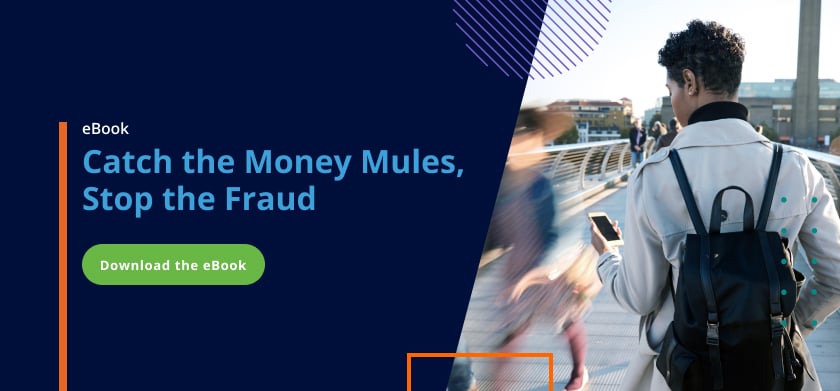
Money mules are impacting the economic business model of online fraud. A steady rise in digital banking services coupled with the cost of living crisis has increased the frequency of illegal money moving through multiple mule accounts, enabling criminals to use money mules to profit from scams and launder money.
How do cybercriminals use mule accounts?
A “money mule” or a mule account is set up using a stolen identity. These money mules – individuals who are either witting or unwitting participants – are then used to transfer illicit funds to other accounts. They become part of a logistical network that moves money to the pockets of criminals.
Money mules have always been an important part of the financial crime vicious circle. But recently, the money mule problem has become more aggressive and widespread than before.
Why are your online customers an easy money mule target?
The COVID-19 pandemic came out of nowhere and spurred a quick shift toward digital payments. Most financial institutions did their best to handle the sudden changes, but not all banks were ready for the big technological jump.
This disruption opened several loopholes for cybercriminals to exploit. These criminals used the same digital channels to transfer and steal money. For instance, billions of dollars dedicated to relief programs gave rise to new types of fraud, many of which were once thought impossible.
This means there is an increased risk of money mule scams in banking systems and for online customers to become “mules” and allow others to use their accounts for illicit purposes or conduct transactions on their behalf.
Unfortunately, the worst is yet to come.
With rising unemployment, people are looking to make money, even if it means doing something unethical.
Cash-strapped students are turning to money laundering. Cybercriminals use them to move funds through their bank accounts. That is why the number of young people suspected of being money mules has soared in recent times.
The writing is on the wall. Unfortunately, many financial institutions will be caught off-guard. We must do more to disrupt money mule fraud activity and land a big blow to fraudsters.
3 questions to consider as you tackle money mule fraud
1. How are you tracking money mule activity?
Without tracking, financial institutions cannot disrupt mule activity on a large scale. The numbers prove it. Over 80% of fraud executives interviewed believe there’s still room for improvement.
2. Is your existing mechanism good enough to stop mule fraud?
Prompt action makes the difference between major regulatory and financial consequences, as well as a reputational blow from which many institutions might never recover.
3. What are the loopholes to look out for that let criminals get away?
- Are you aware of customers who are offering mule accounts to criminals?
- Can you detect if someone uses a compromised identity to establish a new account?
- Can you detect money mules pretending to be “good” customers?
Mule frauds can have a significant effect on the company’s bottom line and increase the operational overhead. One big fraud case and the company share price could drop.
More importantly, a higher number of mule frauds will hurt your reputation. Your consumers trust you because you are the custodian of their financial investments. When you lose their trust, you lose them as customers.
However, stopping mule accounts is difficult.
It would help if you had a mechanism to prevent the creation of mule accounts without compromising legitimate customers. It is a delicate balance.
Additionally, the mechanism should also identify accounts opened by cybercriminals and provide law enforcement with enough information for fast prosecution.
The only answer – create a better mechanism
Start by finding the current loopholes in your fraud detection system. Then invest in the latest technology to uncover missing links. Finally, create a flexible process to save your customers (and yourself) from disaster.
The threat is here, and it will not go away unless you take action. It is time to recognize the realities of the money mule threat and find permanent solutions.
Share this article:
Robert Harris
Robert Harris is the Head of Product Marketing at Feedzai and a passionate proponent for fighting fraud and money laundering particularly in financial services. Robert is an accomplished leader in both small and large organizations in identifying opportunities, securing funding, and creatively delivering value in line with project goals. Whether launching new solutions or maximizing value from mature ones has a keen commercial eye and a conviction to both innovate and make prioritization decisions accordingly.
Related Posts
0 Comments5 Minutes
Spotlight on Denmark: Fraud and Financial Crime Insights from ‘Den sorte svane’
The recent documentary mini-series "Den sorte svane" has sent shockwaves through Danish…
0 Comments9 Minutes
Enhancing AML Transparency with Smarter Data
Doesn’t it seem like new financial threats crop up in the blink of an eye? That’s why…
0 Comments10 Minutes
Enhancing Anti-money Laundering Systems Architecture
A speaker at a financial crime conference I recently attended summed up the problem with…

